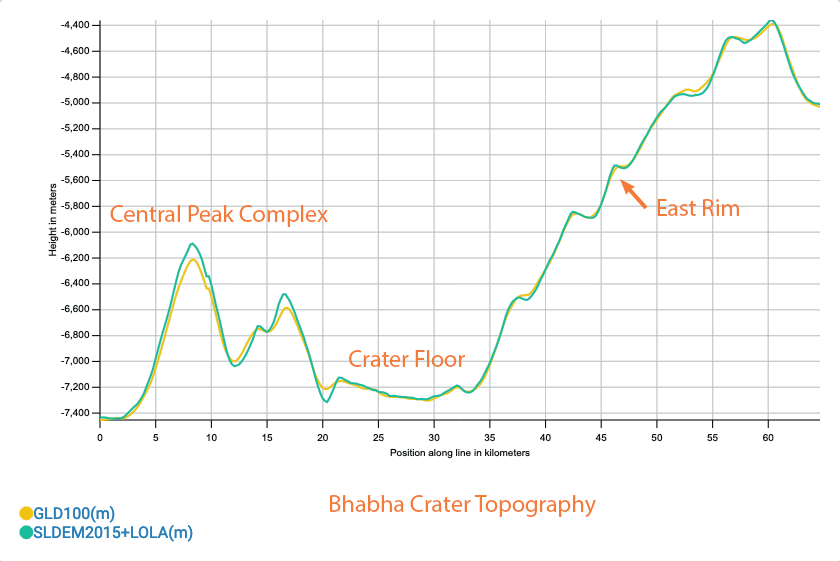
Bhabha crater is located on the Moon's farside, deep within the South Pole–Aitken (SPA) basin. At 80 km in diameter, Bhabha is approximately the same size as Tycho crater, though it lacks Tycho's spectacular rays and crisp features because it is substantially older. But Bhabha has other aspects going for it that make the crater important in its own way. Its location within SPA means that the impact event exposed material that originally resided deep within the Moon, but was excavated and melted by the giant SPA imact event. Reflectance spectroscopy has shown that the central peaks of Bhabha contain pyroxenes that are rich in magnesium but poor in calcium, typical of many craters within SPA. This material may represent the melt sheet of SPA. However the walls of Bhabha have pyroxenes that are rich in calcium, more typical of volcanic material. A mound just to the southeast of Bhabha (termed "mafic mound") also shares this composition, and has been proposed to be a volcanic feature that formed from extruded SPA melt, or melting of the underlying mantle (Moriarty and Pieters, 2015).

In the profile below, note the crater's unusual topography, where outside of the eastern rim of the crater the ground continues to rise. Was this mound outside of the eastern rim there before the crater formed? The high-calcium pyroxene composition of Bhabha's walls suggest that the Bhabha impactor happened upon on another region of non-mare volcanism – perhaps this mound is a remnant of that volcanic history as well?

A site like Bhabha crater would make an excellent spot to explore the unusual geologic history of the SPA basin and how the surface and subsurface evolved after the formation of that basin. Samples obtained from this area would allow us to test theories about the timing of the formation of the basin, learn whether there was a large spike in impact events around 3.9 billion years ago, better understand the composition of the Moon's interior, and learn about non-mare volcanism. Scroll around the full-resolution image of Bhabha below, and imagine the sunrise you would see as you explored this magnificent crater.
Related Featured Images:
Bhabha Sinks Into the Shadows
The Moon's Largest Impact Basin
Tycho Central Peak Spectacular!
Published by Mark Robinson on 22 October 2019